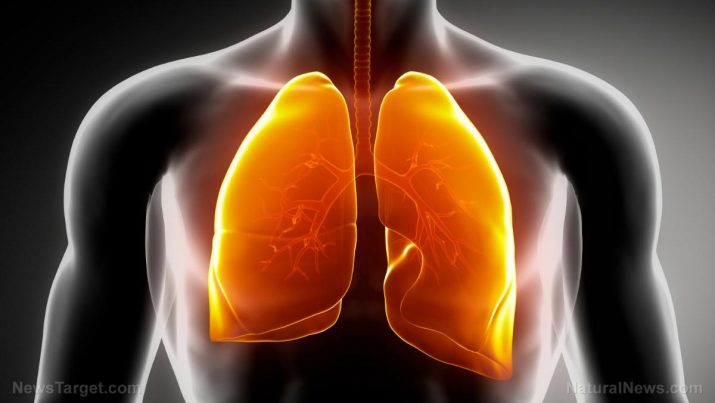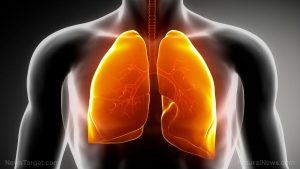
Echinococcosis — causes, side effects and treatments at NaturalPedia.com
Wednesday, March 14, 2018 by Zoey Sky
http://www.naturalpedia.com/echinococcosis-causes-side-effects-and-treatments-at-naturalpedia-com.html

A zoonotic disease, echinococcosis, is transmitted from animals to humans.
Echinococcosis is caused by parasites, mainly by tapeworms of the genus Echinococcus. The two most important forms of echinococcosis that spread to humans are Cystic echinococcosis and Alveolar echinococcosis:
- Cystic echinococcosis (CE) – Also called hydatid disease/hydatidosis, it is caused by infection with Echinococcus granulosus.
- Alveolar echinococcosis (AE) – Caused by infection with E. multilocularis.
The intermediate hosts of Echinococcus include several herbivorous and omnivorous animals. These hosts are infected when they consume the parasite eggs in contaminated food/water. The parasite then develops into larval stages in their internal organs/viscera.
Carnivores act as definitive hosts for the parasite, and they host the mature tapeworm in their intestine. Carnivores are infected when they consume the viscera of infected intermediate hosts.
On the other hand, humans act as so-called accidental intermediate hosts. Humans are infected like other intermediate hosts, but we can’t spread the infection to the definitive host.
Some distinct genotypes of E. granulosus are recognized, with several having distinct preferences when it comes to the intermediate host. CE infections in humans are often caused by dogs and sheep. However, there are other domestic animals that may also be involved such as, camels, cattle, goats, swine, and yaks.
AE often occurs in a wildlife cycle among foxes, other carnivores, and small mammals (usually among rodents). Domesticated cats and dogs may also be infected.

Known side effects of echinococcosis
Some of the known side effects of cystic echinococcosis/hydatid disease in humans infected with E. granulosus include the development of one or more hydatid cysts. These cysts are often located in the liver and lungs. Hydatid cysts can also develop in the bones, central nervous system, eyes, kidneys, muscles, and spleen.
Hyatids that occur in the liver have the following symptoms:
- Abdominal pain
- Nausea
- Vomiting
Hyatids in the lung include the following symptoms:
- Chronic cough
- Chest pain
- Shortness of breath
Alveolar echinococcosis is identified by an asymptomatic incubation period that lasts at least five to 15 years along with the gradual development of a main tumor-like lesion that usually forms in the liver.
Clinical signs of AE include:
- Abdominal pain
- General malaise (a feeling of discomfort that is hard to identify)
- Signs of hepatic failure
- Weight loss
Larval metastases can spread either to organs near to the liver (e.g. the spleen) or locations further away (e.g. the lungs) after the parasite spreads via the blood and lymphatic system. When left untreated, AE can be fatal.
Body systems harmed by echinococcosis
When a hydatid cyst ruptures, it can cause serious illness such as:
- High-grade fever
- Low blood pressure
- Shock with multi-organ failure
- The cyst can also spread to other parts of the body
Echinococcosis can also cause focal cerebral disorders like:
- Aphasia — Language impairment which affects the production or comprehension of speech and reading or writing skills.
- Hemiparesis/weakness in one side of the body
- Seizures
Food items or nutrients that may prevent echinococcosis
The following fruits and nutrients can help prevent echinococcosis:
- Blackberries — The nutrients in blackberries can target and destroy parasites which will make you recover from an infection faster.
- Cruciferous vegetables — Onions and cruciferous vegetables contain thiols, which are sulfur-bearing chemicals with anti-fungal effects. Thiols can also prevent blood clots and they have cholesterol-lowering effects. Cruciferous vegetables include broccoli, Brussels sprouts, cabbage, cauliflower, collard greens, and kale.
- Pineapple — A tropical fruit, pineapple contains bromelain and papain.
- Pumpkin seeds — Pumpkin seeds are another anti-parasitic.
- Spices — Spices like cinnamon, cloves, figs, and rhubarb can help fight parasites. Rhubarb has laxative properties that can help remove parasites. Ginger and olive leaf also has mild anti-parasitic effects. Pomegranate stems and roots also have anti-parasitic effects thanks to a compound called pseudopelletierine.
Treatments, management plans for echinococcosis
Treatment of Echinococcus is often prolonged and complicated. Methods may include:
- Albendazole and mebendazole — These drugs are prescribed for at least three months.
- Praziquantel — This drug can also be prescribed along with albendazole and mebendazole.
- Surgery — Cysts might require removal via extensive surgery that can be complicated.
Where to learn more
- 3 common parasites that are literally eating you alive
- 10 Deadly organisms that live in your body
- Kill internal parasites easily with these 8 herbs
- Mulberries: A Top Anti Aging Super Food (Start Eating Them Right Now)!
- Parasite infection: A hidden cause of disease and deterioration
Summary
A zoonotic disease, echinococcosis is transmitted from animals to humans.
Echinococcosis is caused by parasites, mainly by tapeworms of the genus Echinococcus.
Some of the known side effects of cystic echinococcosis/hydatid disease in humans infected with E. granulosus include the development of one or more hydatid cysts. These cysts are often located in the liver and lungs. Hydatid cysts can also develop in the bones, central nervous system, eyes, kidneys, muscles, and spleen.
When a hydatid cyst ruptures, it can cause serious illnesses such as high-grade fever, low blood pressure, shock with multi-organ failure, and the cyst can also spread to other parts of the body.
Blackberries, cruciferous vegetables, pineapple, pumpkin seeds, and spices can help prevent echinococcosis.
Treatment of Echinococcus is often prolonged and complicated. Methods may include albendazole and mebendazole drugs, praziquantel, and surgery.
Sources include
Tagged Under: Tags: echinococcosis





